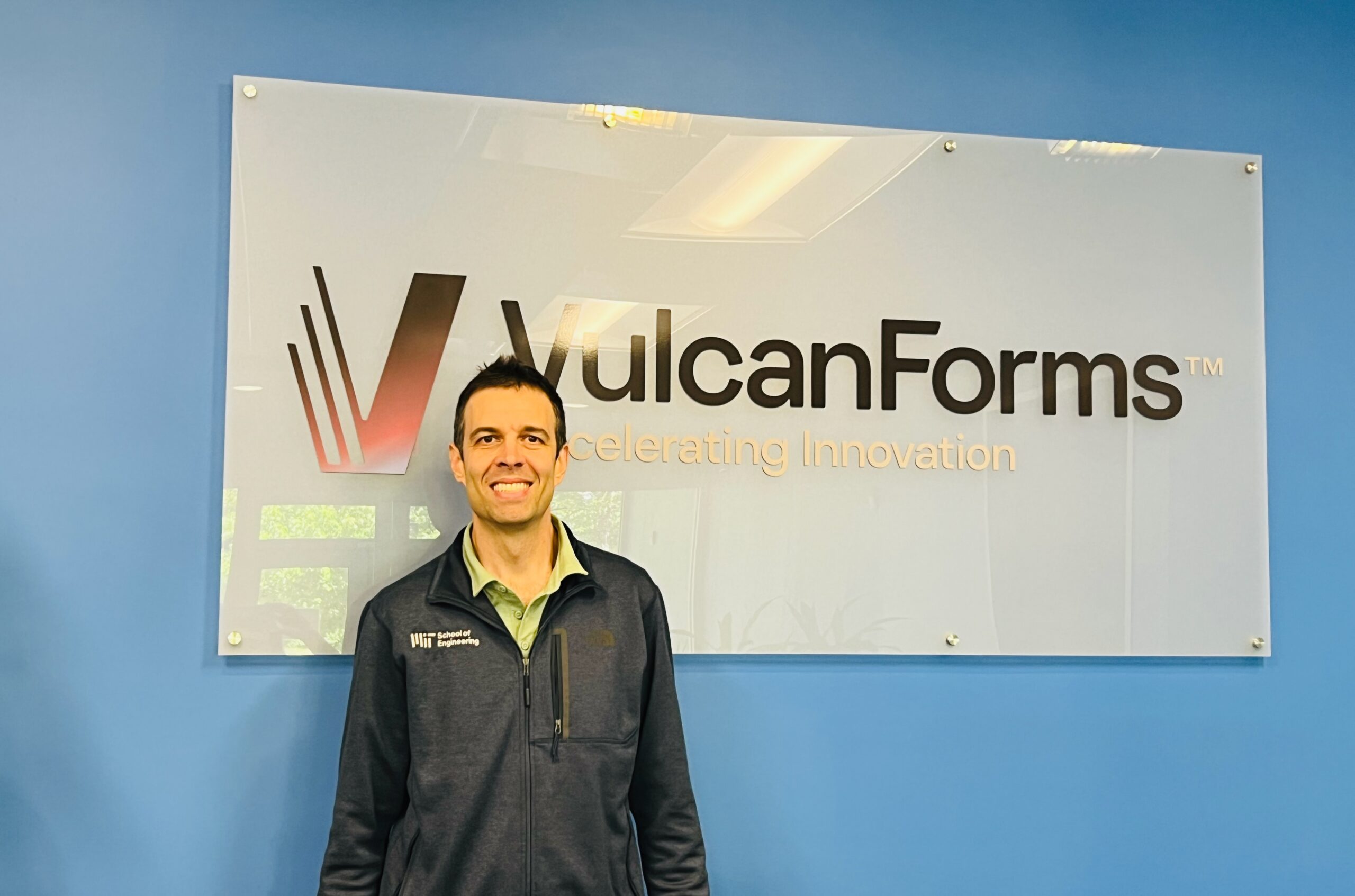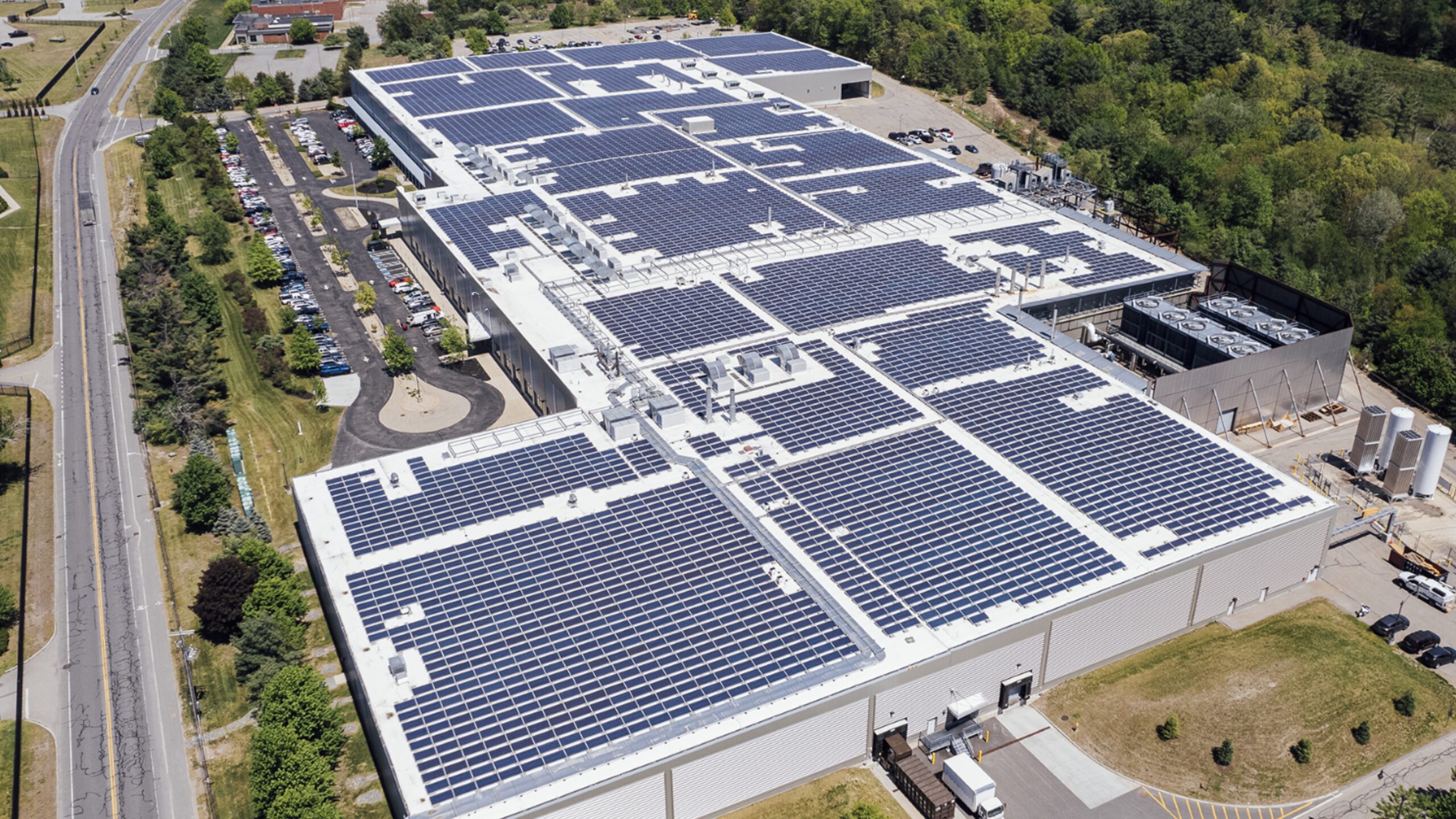VulcanForms sits in Devens, Massachusetts, occupying a vast 160,000-square-foot facility that was once a solar cell manufacturing plant. From the outside, the building blends in with the surrounding industrial area. But inside, a transformation in manufacturing is quietly underway—one that could change how we approach industrial production of metal parts. This site, known as VulcanOne, serves as the company’s headquarters and is the primary site for production.
Allowing plenty of room for multiple production lines, heavy machinery, and more, this location houses a fleet of the company’s industrial machines managed from a central hub. VulcanForms aims to coordinate complex part manufacturing while moving towards a future where metal part production can be reimagined on a large scale.
In addition to VulcanOne, VulcanForms operates a second facility in Newburyport, MA, focusing on precision machining, assembly, and final inspection. This setup helps it consolidate the supply chain, offering an integrated manufacturing solution. The company’s workforce of about 250 people is split between these two sites, with the former Burlington headquarters now fully consolidated into the Devens facility, bringing leadership, customer engagement, engineering, and production under one roof.
Expanding Capabilities
VulcanForms isn’t your typical 3D printing company. It doesn’t just sell machines—it sells manufacturing as a service. Its approach is vertically integrated, meaning the firm controls every aspect of the production process, from designing and building its machines to producing and finishing parts for customers. This allows VulcanForms to offer customization and quality control that are difficult to achieve with more traditional manufacturing methods.
Walking into VulcanForms’ facility, it quickly became clear that this company has big ambitions and the technology to back them up. VulcanForms has maintained a low profile since its inception in 2015, keeping much of its work under wraps. While a degree of confidentiality is standard in advanced manufacturing, VulcanForms takes it to another level—so much so that it doesn’t even disclose its clients. This heightened level of secrecy raises questions: Is it a sign of something truly groundbreaking or simply an indication of the competitive pressures the company faces? Either way, the mystery only adds to the intrigue surrounding its work.
Meeting John Hart, co-founder and one of the key driving forces behind VulcanForms, it’s clear that his influence is deeply embedded in the company’s DNA. Hart’s main role as a Professor and Head of the Mechanical Engineering Department at MIT gives him an insider’s view on the academic and industrial sides of manufacturing. This intersection of academia and industry shapes much of what’s happening at VulcanForms. However, balancing such a major role at MIT with the demands of a growing company is no small task. Though he isn’t in a day-to-day executive role, he continues to serve as co-founder, advisor, and board member, noting that he spends as much time as he can working with the company.
“We started VulcanForms because we felt there was a need for an industrially scalable additive technology focused on metals.”

VulcanForms co-founder John Hart at the company headquarters in Massachusetts. Image courtesy of 3DPrint.com/Vanesa Listek.
Hart’s significant role at VulcanForms continues following the departure of Martin Feldmann, the other co-founder and former CEO at the company’s inception. After nearly a decade of driving VulcanForms forward, Feldmann decided to step down. This kind of leadership change is never easy, especially for a young company with big ambitions. Following Feldmann’s departure, Ralph Schmitt, previously the Chief Commercial Officer, stepped up as the interim CEO.
About this transition, Hart said, “From day one, Martin was the driving force behind VulcanForms, leading the team that developed our technology and brought a new production system to market—a truly Herculean task. It was an incredible experience working with him to build VulcanForms for nearly ten years.”
Secrecy and Strategy
Though most aspects of the technology remain confidential, it is clear that VulcanForms employs a unique approach in its laser powder bed fusion systems (LPBF). These machines are designed to produce highly precise metal parts with uniform material properties.
“We assemble our machines in-house, integrating key proprietary technologies, including a large bank of lasers—up to 150 per machine—far more than the one to eight lasers typical in conventional LPBF systems. Combined with our gantry scanning approach, this allows us to address a large build area with consistent material properties, resulting in high throughput and quality.”
Hart explains that VulcanForms is very selective about the projects it takes on, recognizing that focusing on truly meaningful applications is essential for success: “If we did everything, we would be nowhere.” He also notes that the company chooses projects where it can scale and make a significant impact. This focused approach ensures that the firm continues to improve over time. Since most of VulcanForms’ projects are confidential, only a few demonstration geometries are available to the public. However, he made it clear that most of its clients are “large, global, innovative companies, household names.” Beyond that, details were sparse.
“Our goal is to grow the relationship over time. You might start with a small number of applications and ideally grow as the manufacturing capabilities we offer become more important to the customer,” Hart went on. “We differentiate ourselves because of the unique aspects of our technology, but also because we’re vertically integrated and produce fully engineered components. To execute additive well, you need expertise in post-processing, heat treatment, surface engineering, and machining. All of this allows us to consolidate the supply chain for our customers. Plus, we work with customers on applications that can be taken to large scale in terms of volume, focusing on those that have a meaningful impact.”
Demonstration parts displayed at the Devens site included medical implants and military firearm suppressors. Today, the company is focused on three key market verticals—aerospace/defense, medical, and consumer technology—yet is always open to new opportunities and exploring other markets.
Laser Focus
While showing a picture of a build plate of over 500 parts, Hart said, “One of the impressive things is maintaining very thin gaps between parts, while achieving high dimensional accuracy. That makes our approach and the parts we produce very attractive to our customers,” Hart explained.
This precision is not just about the machines but also the materials and the intelligent software that drives VulcanForms’ processes. The company’s deep understanding of materials and costs leads to optimized production, focusing on components that make economic sense at scale.
Hart mentioned, “For some parts, material cost is a significant component of our cost basis. An end-to-end understanding of the economics of additive manufacturing is essential to find the best use cases.”
VulcanForms doesn’t produce its materials; it relies on established powder production companies. This strategy, combined with advanced AI tools and simulation software, allows it to monitor and adjust the printing process to ensure high quality from start to finish.
“We simulate the print before we send it, allowing us to predict heat buildup and stress. Adjustments can be made in advance, leading to better quality when the part is produced.”
The goal at VulcanForms is clear: integrate various capabilities—printing, post-processing, software, and controls—into a seamless production flow. This approach has allowed it to centralize control, reducing the need for constant human intervention: “When the machine operates, we don’t need anyone next to it. The printing is ideally autonomous and nonstop, with software monitoring for imperfections.”
VulcanForms’ headquarters is perhaps an ideal location for this level of manufacturing. Previously a semiconductor-grade manufacturing plant, it already had much of the necessary infrastructure, including cooling systems and inert gas recycling, which saved the company significant time and resources in setting up operations.
Hart points out: “Being able to configure those capabilities for us saved us a huge amount of time and money.”
Greener Goals
Another exciting aspect of VulcanForms is its commitment to sustainability. The company’s production process is fully electrified, and it’s exploring ways to reduce its carbon footprint. VulcanForms is not only looking to minimize its environmental impact but also aims to contribute to the clean energy transition by manufacturing components for emerging technologies, such as large electrolyzers or potentially even fusion reactors.
“Sustainability is important to our customers,” Hart said. “While it’s not yet a major driver of adoption, for some materials like titanium, the lower material waste of additive manufacturing can significantly lower the overall carbon footprint. Electrified manufacturing technologies are a crucial part of this transition, and we believe our capabilities can support clean energy technologies as they scale.”
Walking through the VulcanForms facility, it’s hard not to be impressed by the scale and ambition of what the startup is trying to achieve.
While the company is relatively quiet regarding public announcements, that seems to be by design: “We don’t want to be the flashiest company out there. Instead, we’re focused on building this muscle over time, and we’ll show our progress points when we’re ready.”
Although somewhat enigmatic, VulcanForms seems to be pushing the boundaries of what’s possible with metal 3D printing, and while there are challenges ahead, it seems more than capable of meeting them head-on. As Hart said during our conversation, “We’re just getting started, and there’s so much more to come.”
Subscribe to Our Email Newsletter
Stay up-to-date on all the latest news from the 3D printing industry and receive information and offers from third party vendors.
You May Also Like
3D Printing News Briefs, November 23, 2024: Formnext Awards, Batch Production, & More
We’re covering a variety of stories in today’s 3D Printing News Briefs, from the Formnext Awards to metal additive manufacturing for batch production and more. Read on for all the...
Nano Dimension Expands Micro-Manufacturing with Exa 250vx 3D Printer
As it continues to push for the acquisitions of Desktop Metal and Markforged, Nano Dimension has introduced a new micro-3D printing system at Formnext. Adding to the Fabrica Tera and...
Formnext Day Three: Rock & Zoll
The biggest news on day three was, of course, the reactions to the band at the exhibitor’s party. The soirée was well attended, with the crowd rocking on until early...
Formnext 2024 Roundup: Pellet 3D Printing, Advanced Software, & More
Europe’s leading additive manufacturing trade show, Formenxt 2024, comes to a close today. There have been many product, material, software, and other business announcements during the event, and we’ll summarize...









































